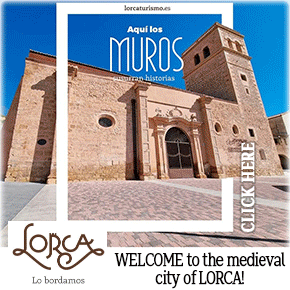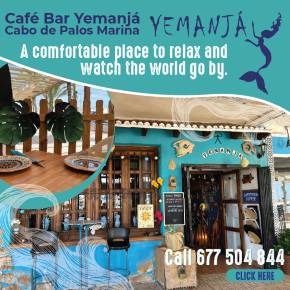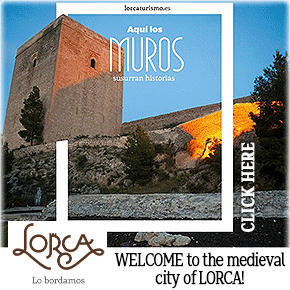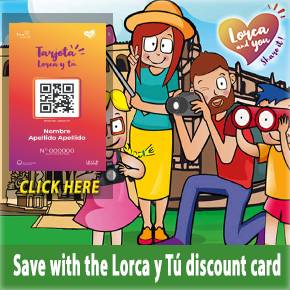ARCHIVED - March 22 Turandot, opera at the Teatro Guerra in Lorca
The masterpiece by Puccini at the historic theatre in the centre of Lorca
 Turandot is one of the masterpieces of opera penned by Giacomo Puccini, although in this instance it was left unfinished at the time of his death and was completed by Franco Alfano before being performed for the first time at La Scala in Milan on 25th April 1926.
Turandot is one of the masterpieces of opera penned by Giacomo Puccini, although in this instance it was left unfinished at the time of his death and was completed by Franco Alfano before being performed for the first time at La Scala in Milan on 25th April 1926.
This 3-act work includes the Nessun Dorma aria, which was made famous to a wider audience by Luciano Pavarotti during the 1990 World Cup, and is based on a work by the great Persian poet Nezami. It tells the story of seven princesses, one of whom becomes a recluse until a man worthy of her hand can solve a series of riddles, and Puccini’s opera is based on a version of this story by Friedrich Schiller.
The performance on March 22 begins at 21.00 with tickets priced at 15, 28 and 30 euros.
Tickets for shows and performances at the Teatro Guerra are available online here. Alternatively, the box office is open on weekday mornings from 11.00 to 14.00, from Monday to Thursday in the afternoon (18.00 to 20.00) and one hour before the start of each event.
Address: Plaza Calderón de la Barca, s/n, Lorca
Telephone: 968 473122, line attended 9.00 to 14.00 and 18.00 to 20.00.
For more local events, news and visiting information go to the home page of Lorca Today.
Oficina de Turismo de Lorca

The rich and extensive history of Lorca has left a legacy of archaeological sites, and historic buildings, around which the modern city has built its tourism industry. Among these are Lorca Castle, the Jewish quarter of the castle and synagogue, Plaza de España, Colegiata de San Patricio, Museo de Arqueologico Municipal, Iglesia de San Francisco, Casa Huerto Ruano, Palacio de Guevara, Iglesia de San Mateo, Pósito de los Panaderos, Convento Virgen de las Huertas, Antiguo Convento de la Merced, Iglesia del Carmen and the Teatro Guerra.
 Unfortunately Lorca has also been prone to natural disaster, suffering a Gota Fría on September 28th 2012, as well as two earthquakes measuring 5.3 and 5.5 on the Richter scale on 11th May 2011, claiming 9 lives. Since this earthquake the city has been rebuilding, winning recognition for its Lorca, Open for Restoration initiative, which used the restoration of the city as a tourist attraction whilst it rebuilt its historical buildings, some of which are currently still not open.
Unfortunately Lorca has also been prone to natural disaster, suffering a Gota Fría on September 28th 2012, as well as two earthquakes measuring 5.3 and 5.5 on the Richter scale on 11th May 2011, claiming 9 lives. Since this earthquake the city has been rebuilding, winning recognition for its Lorca, Open for Restoration initiative, which used the restoration of the city as a tourist attraction whilst it rebuilt its historical buildings, some of which are currently still not open.
The tourist office relocated for 14 years to Calle San Patricio, near the church, but has now returned to its former premises alongside the Palacio de Guevara in the Plaza Concha Sandoval, or Plaza de la Bordadora (click for map).
Lorca also has an area of coastline incorporating the Parque Regional de Cabo Cope - Puntas de Calnegre, in the Sierra de Almenara, which includes the beaches of Puntas de Calnegre, Baño de las Mujeres, San Pedro, El Siscal, Cala Honda, Cuartel del Ciscar, Junquera, Cala de la Gruta, Cala Leña, Los Hierros, Cala Blanca and Playa Larga, although many are accessible only along difficult tracks or by boat!

However, in spite of its many attractions, the name of Lorca is synonymous with Easter, (Semana Santa) its biblical parades of International Tourist Interest status and famous throughout Spain. The week includes a series of processions in which the Whites (Paso Blanco) and Blues (Paso Azúl) try to outdo each other with the magnificence of their embroideries and the skill and daring of their horsemen.
Lorca also has a Parador hotel, located within the historic castle.
Opening hours for Lorca tourist office:
Every day of the year apart from 1st and 6th January and 25th December, 10.00 to 14.00 and 16.30 to 18.30 (except Sunday afternoons).
These opening times are often extended and other information points created during the Semana Santa celebrations.
For more local news, events and visiting information go to the home page of Lorca Today






























